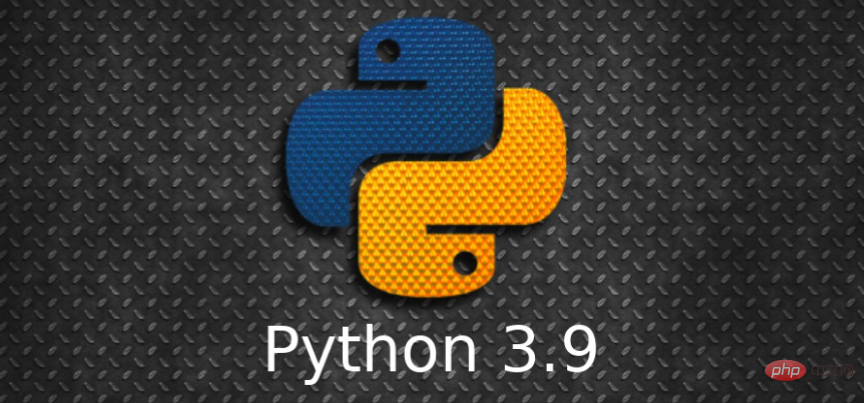所属分类:php教程

程序员必备接口测试调试工具:立即使用
Apipost = Postman + Swagger + Mock + Jmeter
Api设计、调试、文档、自动化测试工具
后端、前端、测试,同时在线协作,内容实时同步
Python 3.9,来了!
过去一年,来自世界各地的开发者们一直在致力于Python3.8的改进。Python 3.9 beta版本已经存在了一段时间,第一个正式版本于2020年10月5日发布。
每个Python版本都包含新开发和改进的功能,Python 3.9也不例外。

【python学习交流群】
下面介绍Python 3.9几个主要的新功能。
字典是Python中最基础的数据结构之一,并且随着python版本的迭代,性能得到不断地优化。
Python3.9中,合并(|)和更新(|=)运算符已添加到dict类中。这些更新完善了现有的dict.update和{** d1,** d2}方法。
传统合并字典的方法:
>>> pycon = {2016: "Portland", 2018: "Cleveland"} # 字典1>>> europython = {2017: "Rimini", 2018: "Edinburgh", 2019: "Basel"} # 字典2# 方法一>>> {**pycon, **europython}{2016: 'Portland', 2018: 'Edinburgh', 2017: 'Rimini', 2019: 'Basel'}#方法二>>> merged = pycon.copy>>> for key, value in europython.items:... merged[key] = value...>>> merged{2016: 'Portland', 2018: 'Edinburgh', 2017: 'Rimini', 2019: 'Basel'}复制代码这两种方法都合并了字典而不更改原始数据。请注意,字典1中“Cleveland”已被合并的字典2中“Edinburgh”覆盖。
你也可以更新字典1:
>>> pycon.update(europython)>>> pycon{2016: 'Portland', 2018: 'Edinburgh', 2017: 'Rimini', 2019: 'Basel'}复制代码新版本的Python引入了两个新的字典运算符:合并(|)和更新(|=)。你可以使用|合并两个字典,而|=用于更新字典:
>>> pycon = {2016: "Portland", 2018: "Cleveland"}>>> europython = {2017: "Rimini", 2018: "Edinburgh", 2019: "Basel"}>>> pycon | europython # 合并{2016: 'Portland', 2018: 'Edinburgh', 2017: 'Rimini', 2019: 'Basel'}>>> pycon |= europython # 更新>>> pycon{2016: 'Portland', 2018: 'Edinburgh', 2017: 'Rimini', 2019: 'Basel'}复制代码d1|d2和{** d1,** d2}的作用类似,都用于合并字典取并集,遇到相同key,后者会将前者覆盖。
使用|的优势之一是它适用于类似字典的类型,并在合并后保持原来的类型:
>>> from collections import defaultdict>>> europe = defaultdict(lambda: "", {"Norway": "Oslo", "Spain": "Madrid"})>>> africa = defaultdict(lambda: "", {"Egypt": "Cairo", "Zimbabwe": "Harare"})>>> europe | africadefaultdict(<function <lambda> at 0x7f0cb42a6700>,{'Norway': 'Oslo', 'Spain': 'Madrid', 'Egypt': 'Cairo', 'Zimbabwe': 'Harare'})>>> {**europe, **africa}{'Norway': 'Oslo', 'Spain': 'Madrid', 'Egypt': 'Cairo', 'Zimbabwe': 'Harare'}复制代码|=的作用是更新字典,类似于.update:
>>> libraries = {... "collections": "Container datatypes",... "math": "Mathematical functions",... }>>> libraries |= {"zoneinfo": "IANA time zone support"}>>> libraries{'collections': 'Container datatypes', 'math': 'Mathematical functions','zoneinfo': 'IANA time zone support'}复制代码|=还可以将类似字典的数据结构用于更新:
>>> libraries |= [("graphlib", "Functionality for graph-like structures")]>>> libraries{'collections': 'Container datatypes', 'math': 'Mathematical functions','zoneinfo': 'IANA time zone support','graphlib': 'Functionality for graph-like structures'}复制代码在Python 3.9中,可以使用.removeprefix和.removesuffix分别删除字符串的开头或结尾:
>>> "three cool features in Python".removesuffix(" Python")'three cool features in'>>> "three cool features in Python".removeprefix("three ")'cool features in Python'>>> "three cool features in Python".removeprefix("Something else")'three cool features in Python'复制代码有人会说.strip方法也可以呀,但是该方法会出现误删操作:
>>> "three cool features in Python".strip(" Python")'ree cool features i'复制代码可以看到,明明想删掉结尾的单词python,但是开头的there也被删除了一部分-Th。
所以.removeprefix和.removesuffix可能更精准一些。
zoneinfo是python3.9新引入的模块,zoneinfo可以访问Internet号码分配机构(IANA)时区数据库。IANA每年都会多次更新其数据库,这是时区信息的最权威来源。
使用zoneinfo,可以获得数据库中描述任何时区的对象:
>>> from zoneinfo import ZoneInfo>>> ZoneInfo("America/Vancouver")zoneinfo.ZoneInfo(key='America/Vancouver')
>>> from zoneinfo import ZoneInfo>>> from datetime import datetime, timedelta>>> # 夏令时>>> dt = datetime(2020, 10, 31, 12, tzinfo=ZoneInfo("America/Los_Angeles"))>>> print(dt)2020-10-31 12:00:00-07:00>>> dt.tzname'PDT'>>> # 标准时间>>> dt += timedelta(days=7)>>> print(dt)2020-11-07 12:00:00-08:00>>> print(dt.tzname)PST复制代码在类型提示中,现在可以将内置集合类型(例如list和dict)用作泛型类型,而不必从typing中导入相应的大写类型(例如List或Dict)。
def greet_all(names: list[str]) -> None:for name in names:print("Hello", name)复制代码Python 3.9添加了一个新的模块graphlib,其中包含graphlib.TopologicalSorter类,以提供执行拓扑排序的功能。
>>> dependencies = {... "realpython-reader": {"feedparser", "html2text"},... "feedparser": {"sgmllib3k"},... }...>>> from graphlib import TopologicalSorter>>> ts = TopologicalSorter(dependencies)>>> list(ts.static_order)['html2text', 'sgmllib3k', 'feedparser', 'realpython-reader']复制代码Python长期以来一直具有用于计算两个数字的最大公约数(GCD)的功能:
>>> import math>>> math.gcd(49, 14)7复制代码
最小公倍数(LCM)与最大公约数(GCD)有关,可以根据GCD定义LCM:
>>> def lcm(num1, num2):... if num1 == num2 == 0:... return 0... return num1 * num2 // math.gcd(num1, num2)...>>> lcm(49, 14)98复制代码
在Python 3.9中,不再需要定义自己的LCM函数,它新增了计算最小公倍数功能:
>>> import math>>> math.lcm(49, 14)98复制代码
Python 3.9最酷的功能之一是大家在日常编程中不会注意到的功能,那就是解析器的更新。解析器是Python解释器的基本组件。在最新版本中,解析器已重新构建。
Python之前一直使用LL(1)解析器将源代码解析为解析树。你可以将LL(1)解析器视为一次读取一个字符,并解释源代码而无需回溯的解析器。
新解释器是基于PEG(parsing expression grammar)实现的,并非LL(1)。新解析器的性能可以与旧解析器媲美,在设计新语言功能时,PEG比LL(1)更灵活。
在整个标准库中,PEG解析器稍快一些,然而也使用了更多的内存。实际上,使用新解析器时,很难能感知到性能的好坏。
相关免费学习推荐:python教程(视频)
以上就是终于介绍Python 3.9的详细内容,更多请关注zzsucai.com其它相关文章!
